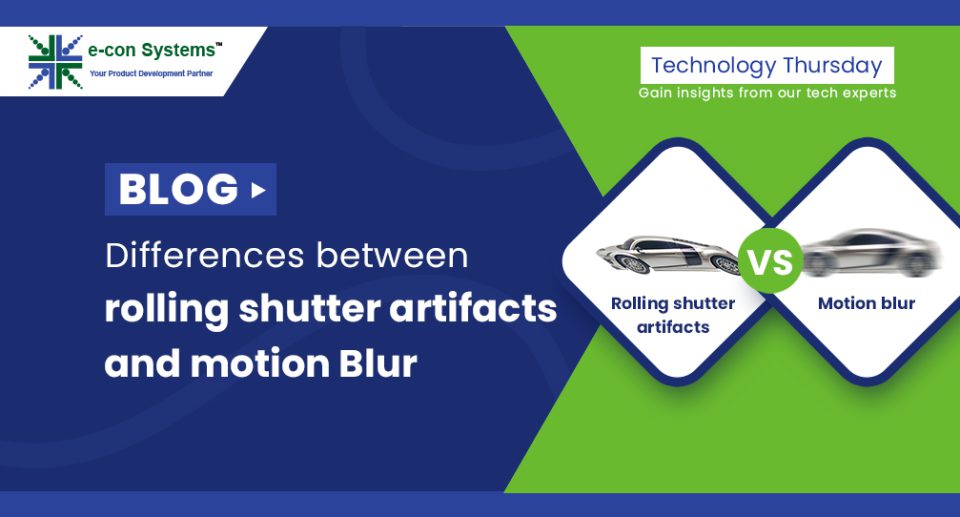There has been so much confusion around the terms rolling shutter artifact and motion blur. Many use them interchangeably by mistake. Even though both occur while capturing moving objects, motion blur is not caused by rolling shutter mechanism of the camera. Another misconception is that a global shutter camera can eliminate both rolling shutter artifact and motion blur, which is not true.
In this blog, we demystify some of these concepts for you. We will learn the key differences between the two phenomena, and attempt to understand why using a global shutter camera is not enough to eliminate motion blur.
Understanding rolling shutter artifact
Before we start looking at the differences between rolling shutter artifact and motion blur, it is important to understand what each of them means. Let us start with rolling shutter artifact first.
As the name suggests, rolling shutter artifacts are caused by a rolling shutter mechanism in which every row in a frame is exposed at different times during the integration phase. Here, the exposure of consecutive rows starts sequentially. This behavior results in deformations in the output image while capturing moving objects.
For instance, have a look at the below image to understand how the rolling shutter mechanism works.
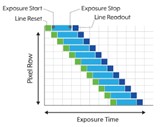
Since this mechanism results in distortions in the output image, below is how the image of a moving car might look like while captured using a rolling shutter camera:
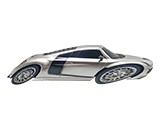
The best solution to overcome rolling shutter artifacts is to use a camera with global shutter mechanism in which all the rows in a frame are exposed at the same time. Since all the rows are having the same start and end exposure times, there is no possibility of rolling shutter artifact occurring.
The below image is a good representation of how the global shutter mechanism works:
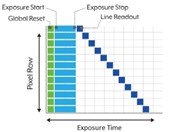
If the image of the same moving car is captured using a global shutter camera, this is how it would look like:

As you can see, the image is captured as it is without any distortion.
To learn more about the key differences between rolling shutter and global shutter cameras and how to choose one for your application, have a look at the article What are global shutter and rolling shutter? How to choose the one that fits the application?
Motion Blur
Now let’s understand how motion blur occurs while capturing moving objects. Motion blur is the blur caused in the output image when the target object moves too fast within the exposure time where the object position will vary between start and end exposure times. The more the exposure time, higher are the chances of motion blur occurring. Motion blur also increases with increase in speed of the target object.
The solution to eliminate motion blur is reducing the exposure time i.e., increasing shutter speed. This will ensure that the entire frame is exposed only for a short period of time, and the object doesn’t change its position significantly enough to cause motion blur during a single capture. Parameters such as moving speed of the target and distance between the camera and the object need to be considered while determining the shutter speed.
The below image depicts the effect of motion blur on the output image
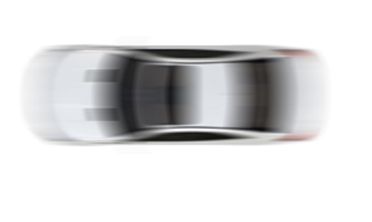
At the same time, if the same moving object is captured using a low exposure time or high shutter speed camera, this is how the output image would look like:
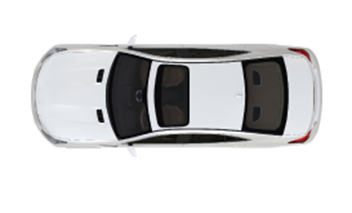
One disadvantage of high shutter speed is that it might lead to underexposed frames if the lighting conditions are not favorable. So, it is crucial to consider the lighting condition as well while determining the shutter speed of a camera.
Rolling shutter artifact and motion blur – how they are different
Now that we understand the basics of both the phenomena, let us look at the differences between the two.
As motion blur is purely dependent on the length of exposure time, this can happen in both global shutter and rolling shutter cameras. With global shutter mechanism, rolling shutter artifacts are completely eliminated while motion blur could still occur. Whereas in rolling shutter cameras, both rolling shutter artifact and motion blur can happen. The below images depict the various effects we have discussed so far.




Please note that when we say capturing moving objects, the concept we discussed so far would apply for capturing a static target with moving camera as well.
I hope, this blog gave some fruitful insights on the differences between rolling shutter artifact and motion blur, and how to fix them.
If you have any further queries on the topic, please write to camerasolutions@e-consystems.com.
List of global shutter cameras from e-con Systems
- See3CAM_24CUG: Full HD USB colour global shutter camera
- e-CAM56_CUOAGX – 5MP Sony® Pregius S IMX568 Color Global Shutter Camera
- See3CAM_50CUG – Sony® Pregius IMX264 Monochrome/Color USB 3.0 Cameras
- See3CAM_27CUG – 2MP OV2312 Global Shutter RGB-IR USB Camera
- STURDeCAM25: IP67 rated Full HD GMSL2 colour global shutter camera module
- eCAM24_CUNX: colour global shutter camera for NVIDIA Jetson Xavier NX/TX2 NX/Nano
- See3CAM_20CUG: 2MP monochrome global shutter camera
- See3CAM_10CUG: Monochrome global shutter USB camera
- e-CAM20_CURB – AR0234 Global Shutter Raspberry Pi 4 Camera

Prabu is the Chief Technology Officer and Head of Camera Products at e-con Systems, and comes with a rich experience of more than 15 years in the embedded vision space. He brings to the table a deep knowledge in USB cameras, embedded vision cameras, vision algorithms and FPGAs. He has built 50+ camera solutions spanning various domains such as medical, industrial, agriculture, retail, biometrics, and more. He also comes with expertise in device driver development and BSP development. Currently, Prabu’s focus is to build smart camera solutions that power new age AI based applications.




